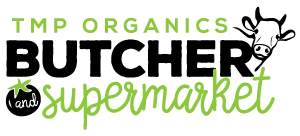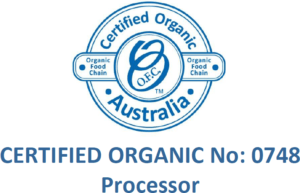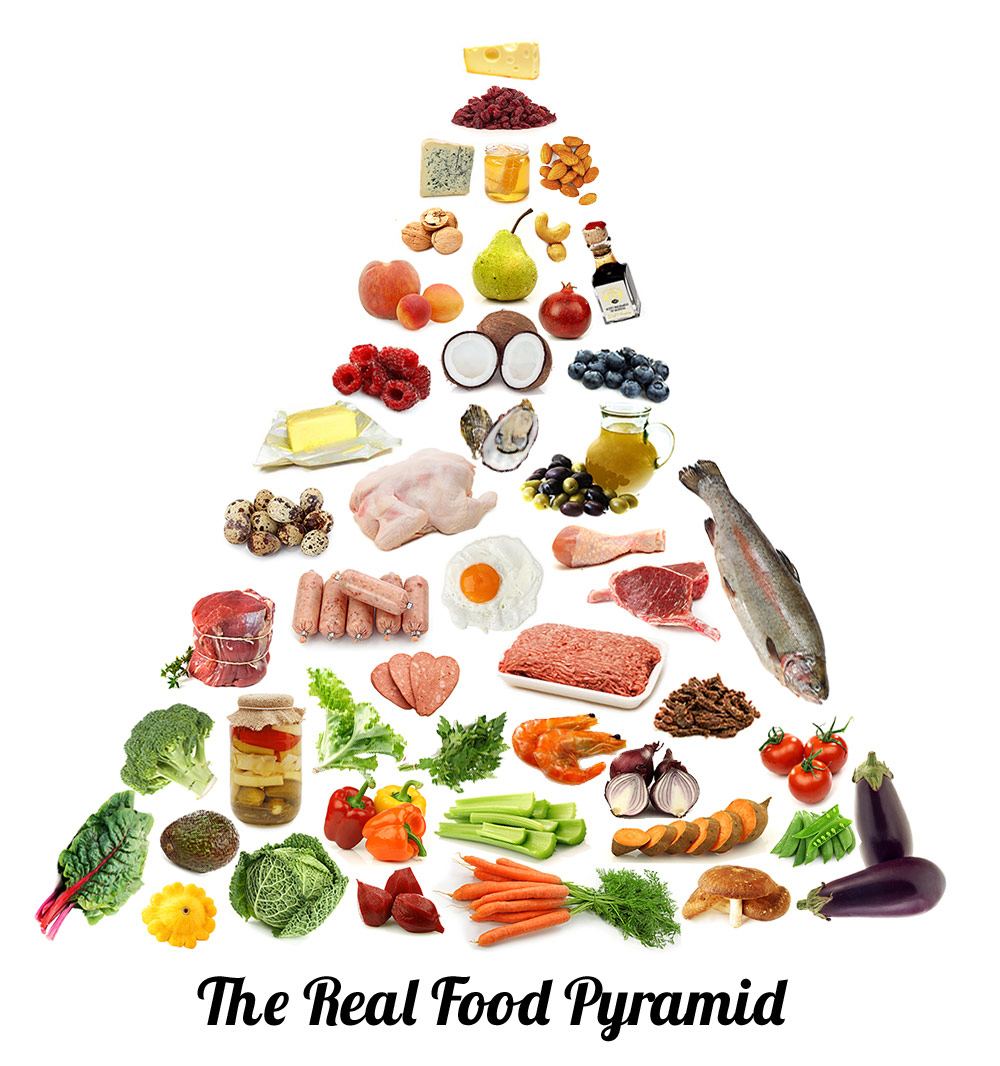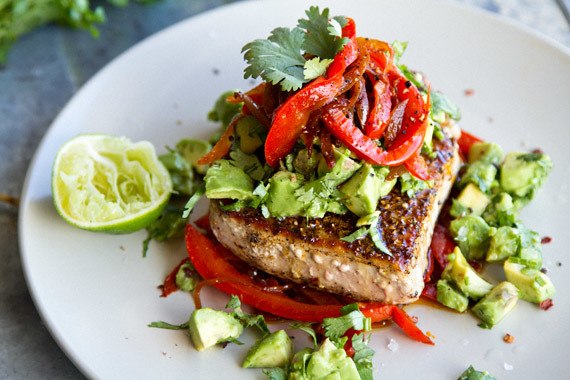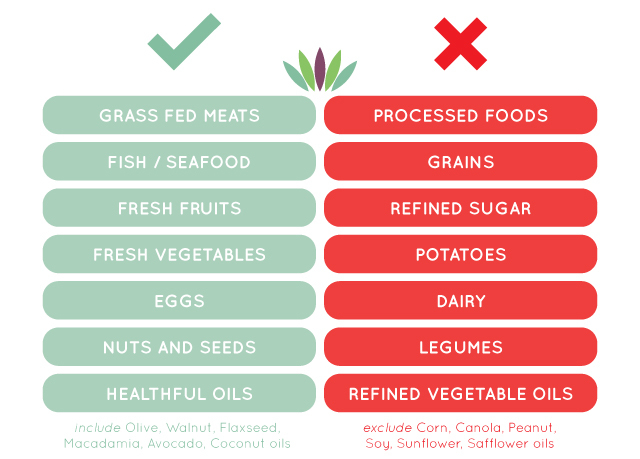What is the Paleo Diet?
The Paleo Diet has made its way into the mainstream over the past few years thanks to numerous best-selling books and TV celebrities spreading the word about Paleo. Converts are raving about the diet in their social circles and gyms, leaving many of us wondering what exactly is this Paleo diet we keep hearing all about?
Also referred to as the “Primal”, “Caveman” or “Stone Age” diet, the Paleo Diet is based on core principles from our hunter-gatherer, ancestral lifestyle. Although at first glance it may appear to be another new fad diet, Paleo is actually about returning to a simpler, healthier way of eating that supports health and well-being.
Mark Sisson, author of the best-selling book The Primal Blueprint, explains that while the world has changed in innumerable ways in the last 10,000 years, the human genome has changed very little and thus only thrives under similar conditions.
The diet appeals to many as it advocates a healthy way of living as well as healthy food choices. The “Paleo way” goes beyond the foods we eat by emphasising healthy lifestyle habits such as getting enough sleep, stress reduction, sun exposure, exercise, and avoiding harmful substances.
Eat Drink Paleo blogger and author, Irena Macri, says that in today’s world we are largely desk-bound, consuming packaged, processed foods, living with chronic stress, and not getting enough sleep, all of which can make us sick, fat and depressed. To achieve optimal health, the Paleo lifestyle draws its core principles from our ancestors who ate whole, unprocessed foods, moved more, slept better and stressed less.
It’s not about re-enacting the Paleolithic era, says Macri, but rather recognising our genetic predisposition and applying current knowledge of how different foods and activities affect our body’s functions like metabolism, digestion, insulin sensitivity, and systemic inflammation.
The diet combines these principles with modern scientific research and good common sense, and is intended as a framework rather than a “one-size-fits-all” approach to eating. Paleo can be tailored to individual needs, goals, body types and sensitivities.
Health Benefits of Paleo
Paleo focuses on real, whole, unprocessed foods. This reduces, and in most cases eliminates, consumption of preservatives, additives, artificial colours and flavours, hidden sugars, artificial sweeteners, sodium and flavour enhancers. As a result, you eliminate toxins and increase nutrient intake.
Paleo is a diet rich in nutrients, placing a huge emphasis on fresh organic vegetables. Instead of filling up on processed carbs such as bread and pasta, Paleo followers get their daily dose of goodness through organic lean meat, veggies, fruit and berries, healthy fats, nuts and seeds, all of which are full of vitamins and minerals.
Most people experience weight loss and muscle growth while eating a Paleo diet and keeping active. Improved metabolic processes and gut health, better sleep, stress management, sufficient Vitamin D and a healthy ratio of Omega-3/6 fatty acids all aid in burning off stored body fat. They also experience less bloating after meals and less irritability (also commonly referred to as “hangry”) before meals.
Paleo consists of healthy fats from grass fed meat, poultry, seafood, coconut, olive oil, nuts and seeds. There are no trans fats. A healthy ratio of Omega-3 to Omega-6 fatty acids is also promoted. The right types of fat are essential in maintaining healthy arteries, brain function, healthy skin, as well as decreasing systemic inflammation.
People following the Paleo/Primal diet experience many of the below benefits:
• Increased and more stable energy levels
• Improved sleep
• Clearer skin and healthier looking hair
• Mental clarity
• Improved mood and attitude
• Improvements in those suffering depression or anxieties
• Less or no bloating, decreased gas
• Sustained weight loss
• Muscle growth; increased fitness
• Lowered risk of heart disease, diabetes and cancer
• Higher immune function and a general feeling of well being
• Improved glucose tolerance; decreased insulin secretion and increased insulin sensitivity
• Improved lipid profiles
• Healthier gut flora
• Better absorption of nutrients from food
• Reduced allergies
• The Paleo diet is anti-inflammatory, and most people experience reduction of pain associated with inflammation
• Improvements in those with respiratory problems such as asthma
What’s Involved?
The Paleo diet focuses on unprocessed whole foods, lots of healthy fats including saturated fat, grass-fed, free-range meat and eggs, lots of fish and seafood, vegetables, fruit, berries, nuts, seeds and some natural sweeteners. It excludes grains, legumes, processed sugar and most dairy. Some people include healthy dairy foods like kefir, full fat natural yogurt, some aged cheese and butter, but of course it really depends on your sensitivities. Paleo also focuses on local, organic produce and good farming practices.
A common misconception about the Paleo diet is that it’s a low-carb diet with a focus on meat. While a lower amount of carbohydrates may be consumed compared to the standard Australian diet through the exclusion of grains and refined sugars, plenty of carbs are still consumed from vegetables, fruits and nuts.
There are a few hard and fast rules on the Paleo Diet, but as we mention above, Paleo is a framework and a lifestyle which means many people choose to be a little flexible in their approach, taking what works for them and their bodies.
What’s In:
• Meat and poultry (including offal): grass-fed, free range meat is not only a kinder and more ethical way to consume animal products but it is also much higher in nutrients because of the way the cattle was fed and raised.
• Fish and seafood: try to choose sustainable, wild fish and seafood when possible.
• Eggs: free-range, pasture raised whenever possible.
• Vegetables: non-starchy and starchy tubers and root vegetables.
• Fruit and berries: stick to low sugar fruit and berries and keep high sugar fruit like bananas and mangos for days when you need a higher carbohydrate intake or when in season and tasting delicious.
• Nuts and seeds: in moderation. They are nutritious but many nuts and seeds are high in Omega-6 fatty acids which can be pro-inflammatory if consumed in large quantities and when your diet is not balanced by an equal amount of Omega-3 fatty acids found in oily fish like salmon and sardines, eggs and leafy greens.
• Spices and herbs
• Salt: use good quality sea salt or Celtic salt to get beneficial minerals and be sensible with it.
• Healthy fats: coconut oil, coconut milk and cream, ghee, butter (it’s mostly fat so no big problems with lactose), duck fat, olive oil, avocado oil, macadamia nut oil, fish oil, sesame oil as well as from grass-fed meats, poultry and fish.
• Condiments: mustard, good quality vinegars such as Apple Cider or aged Balsamic, olive oil, mayonnaise, low sugar tomato sauces and paste, anchovies, olives, gherkins, capers, salsas and pestos, are all fine, just make sure no nasty chemicals and preservatives are added. Wheat free soy sauce such as Tamari and naturally derived oyster sauce are ok every now and again.
• For baking: nut meals, coconut flour, tapioca and arrowroot flour, sweet potato flour, chestnut flour, use in moderation as these are either still high in carbohydrates or may contain high amounts of Omega-6 fatty acids.
What’s Out:
• Grains: especially wheat and anything with gluten.
• Legumes: beans, lentils, chickpeas and so on.
• Refined sugars and carbohydrates: bread, pasta, cookies, white sugar, artificial sugar, high fructose syrup, sodas, fruit juices and so on.
• Dairy: especially milk and low fat dairy and for those with damaged gut or gluten/lactose intolerances.
• Processed vegetable oils and fats such as canola oil (rapeseed), soybean oil, vegetable oil, sunflower oil and margarines and spreads made with such oils.
• Products containing Gluten
OK on occasion:
• Dairy should mainly be avoided, especially if you suffer from gut problems and gluten intolerances, but if you’re in good health and have no sensitivities to lactose (sugars in milk) or casein (protein in milk) then a little healthy dairy can go a long way. Avoid cow’s milk as it has a high Glycemic Index unlike cheese or yogurt. Better options are goat’s and sheep’s milk products, A2 cow’s milk and cow’s milk fermented products like kefir, unsweetened yogurt, aged cheeses, full fat cream, butter, and ricotta.
• Natural sweeteners: honey, maple syrup, molasses, dried fruit, dark chocolate, coconut sugar, rice malt syrup for those avoiding fructose.
• Alcohol: dry wines, clean non-grain based spirits.
• Fermented soy such as miso, tempeh in small amounts, wheat free soy sauce.
• Pseudograins like quinoa, amaranth and buckwheat are less harmful but they are still dense sources of carbohydrates and contain similar anti-nutrients to grains. They should be prepared carefully to remove some of the anti-nutrients such as phytic acid. Soak such grains in salted water for 8-12 hours, rinse and then cook well before consuming. Chia seeds also fall in this category. Buckwheat is the safest out of these.
• Fresh corn, green beans and green peas fall into grain/legume category but are fine to use every now and then and especially when in season and local.
